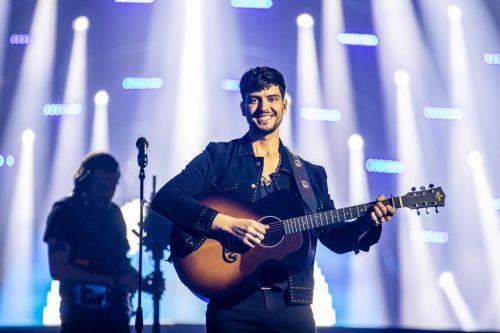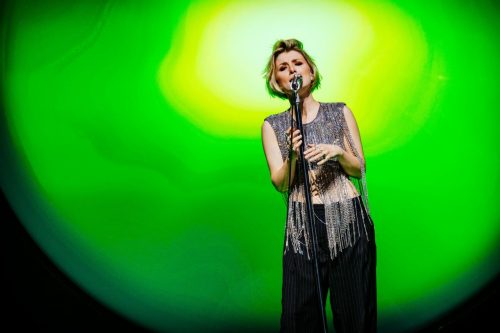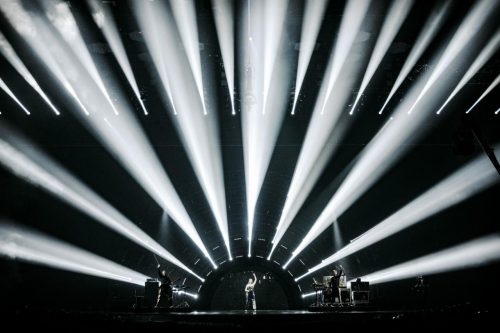Today is the day of the stage again. Today the EBU has made an official statement about it: “During the technical tests in Turin, the production team has experienced challenges with how long it takes to adjust the “sun” to different positions in the time between the different performances. Together with the host station RAI it was therefore decided that the sun will remain in the same position during all 40 songs, to ensure a fair competition for all participating countries.”. What position that is, is still being discussed. So to be continued again. It is certain that a number of countries now have to make changes in their staging.
Meanwhile, 9 countries rehearsed for their performance in the second semifinal.
IRELAND: Brooke takes the stage in a bright blue suit. During her performance she is assisted by four dancers. They start the song lying on the floor! Ireland uses many floor projections. Brooke is also praised by Eurovision.tv for her strong voice. Pyrotechnics are used at the end of her performance.

NORTH MACEDONIA: Andrea stands alone on the podium for North Macedonia. She sings her song completely wrapped in black leather. In her performance she uses the lifting bridges over the water. Shadows of hands are visible on the LED screens. The sun is not only orange but also white and blue.

ESTONIA: Stefan starts his performance on the B stage. He is accompanied only by his guitar. Later in the song, he goes wild: then he uses the entire stage to present his performance. The two cowboys from the national final stayed home.

ROMANIA: WRS from Romania wears glittering wetlook trousers. He also wears a red blouse, but according to Eurovision tradition, that goes off. He turns out to be wearing a sleeveless shirt with glitter underneath. There is a lot of dancing. As a result, the Romanian likely gets a lot of attention from the crowd.

POLAND: The Polish competitor Ochman is also in black, he wears a black suit. He is assisted by four dancers, who seem to represent some kind of water spirits. Flashing light effects can be seen during the performance. The waterfall on the stage is also used… what else could we expect with a song about a river?

MONTENEGRO: Vladana has her entire performance on the B stage. She wears a blue dress during her performance. The background is also blue, with splashes of white as graphics. Vladana mainly remains in one place.

BELGIUM: The Belgian Jérémie Makiese impressed with his song. Jérémie is flanked by four dancers. He himself wears blue-grey trousers, a black shirt and a silver jacket, while the dancers wear black jackets. At the end of the act all the light falls on Jérémie, who is standing on a platform on which flames are projected.

SWEDEN: Cornelia Jakobs ranks high among the bookmakers. As the Swedes always do, Cornelia Jakobs also puts on the same act as during the national final Melodifestivalen. The starry sky at the beginning, the large, first green and then red, circular plate right behind Cornelia, even the silver-black clothing and the bare feet are the same.

CZECH REPUBLIC: The Czech group We Are Domi is the last to rehearse today. The group uses a lot of light, which makes you feel like you’re in a disco. Funny effect: the ‘sun’ on stage looks like a vinyl album here. Eurovision.tv mentions the cello-string guitar: the guitarist made it himself.



